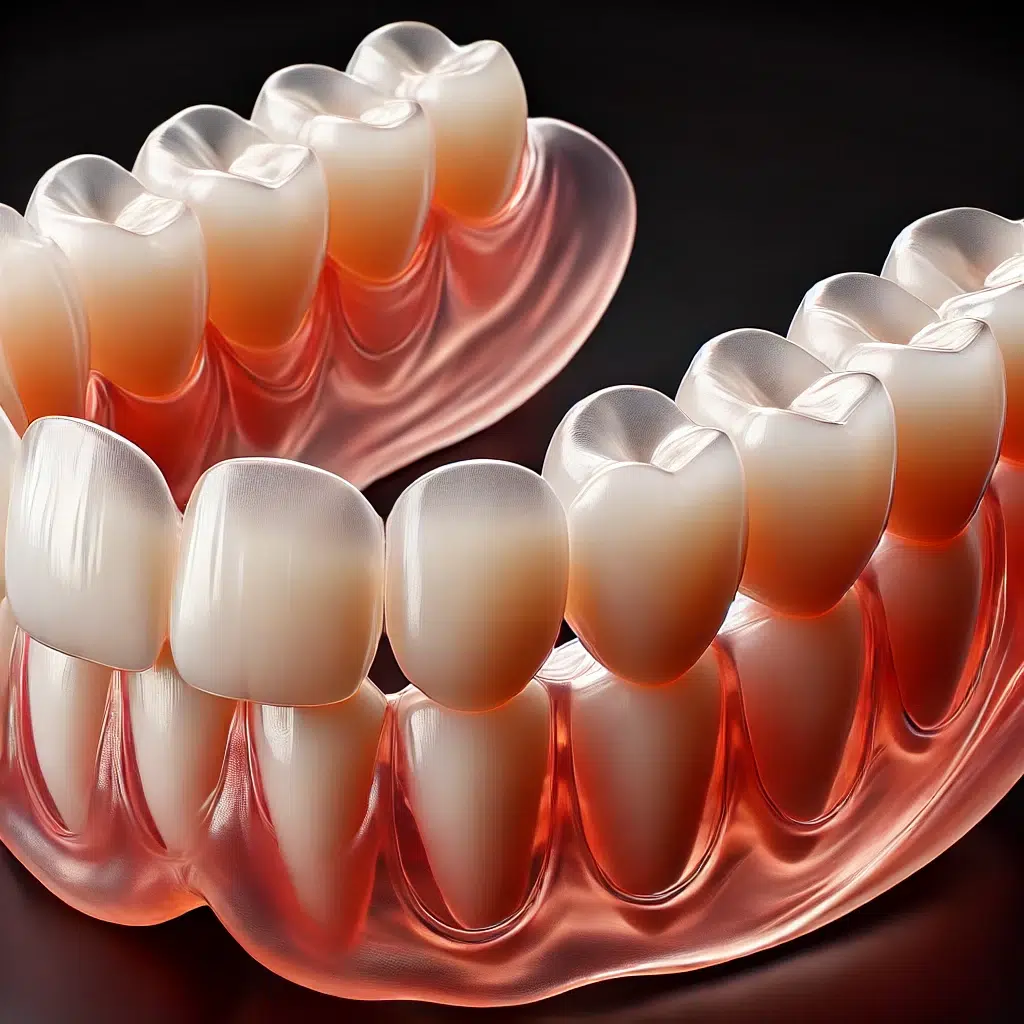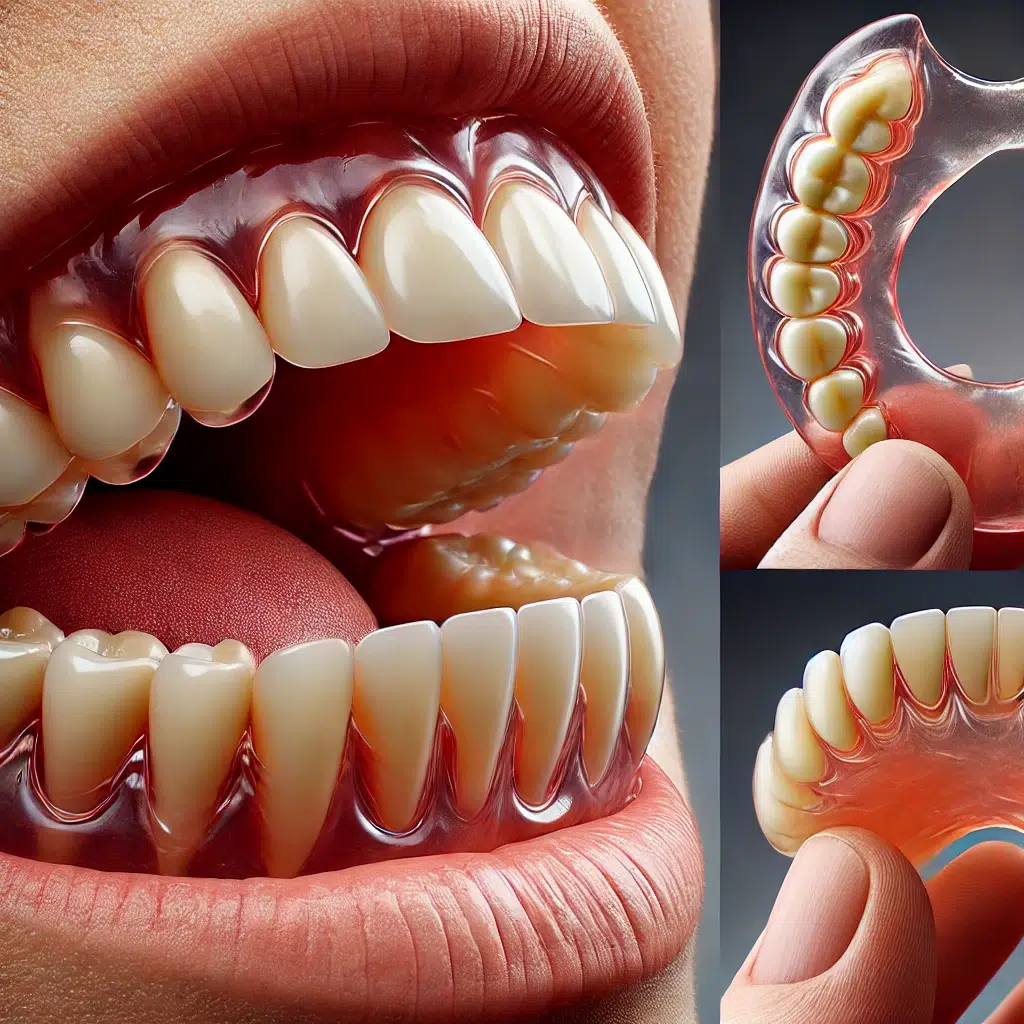Flexible Denture Lab. Mobile No. 01941123488, 01797522136. Flexible Denture Lab is Part of the Dental Laboratory where artificial teeth are produced. We produce excellent quality artificial teeth.
Location of Flexible Denture Lab
Location of Flexible Denture Lab. Mobile No. 01941123488, 01797522136. HRTD Limited, Abdul Ali Madbor Mansion, Section-6, Block-Kha, Road-1, Metro Rail Piller No. 249, Mirpur-10 Golchattar, Dhaka-1216.
Price of Flexible Denture
Some Images of Flexible Denture

Here is an image of a set of flexible dentures, showcasing their lightweight, semi-transparent material and natural gum-colored appearance.

Here is an image showcasing three different views of flexible dentures, highlighting their design, flexibility, and natural appearance.
Classification of Teeth
Teeth are classified based on their type, function, and location in the mouth.
1.Classification Based on Type and Function
Teeth are divided into four main types:
- Incisors (Cutting Teeth)
- Located at the front of the mouth (four on the upper jaw, four on the lower jaw).
- Sharp, thin edges designed for cutting and slicing food.
- Canines (Tearing Teeth)
- Pointed teeth next to the incisors (two on the upper jaw, two on the lower jaw).
- Used for tearing and gripping food.
- Strongest teeth in the mouth.
- Premolars (Grinding Teeth)
- Found behind the canines (four on the upper jaw, four on the lower jaw).
- Have flat surfaces with ridges for crushing and grinding food.
- Molars (Chewing Teeth)
- Located at the back of the mouth (six on the upper jaw, six on the lower jaw, including wisdom teeth).
- Have large, flat surfaces to chew and grind food into smaller pieces for digestion.
2.Classification Based on Development
- Primary (Deciduous) Teeth: Also called baby or milk teeth, there are 20 teeth (10 in each jaw).
- Permanent Teeth: The adult set consists of 32 teeth (16 in each jaw).
3. Classification Based on Location
- Anterior Teeth: Includes incisors and canines (front six teeth in each jaw).
- Posterior Teeth: Includes premolars and molars (back ten teeth in each jaw).
Why Flexible Denture is Popular Nowadays
Flexible dentures have gained popularity due to their comfort, durability, and natural appearance. Unlike traditional acrylic or metal-based dentures, flexible dentures are made from a lightweight, flexible thermoplastic material like nylon or Valplast, making them a preferred choice for many denture wearers.
Advantages of Flexible Denture
- Increased Comfort
- Made from soft, flexible materials that adapt to the shape of the gums.
- Causes less irritation compared to traditional rigid dentures.
- Better Fit & Stability
- Designed to fit snugly without the need for metal clasps or adhesives.
- Reduced risk of slipping or discomfort while eating and speaking.
- Natural Aesthetic Appearance
- Semi-transparent material blends with natural gum color.
- No visible metal parts, making them more discreet.
- Durable & Fracture-Resistant
- More resistant to breaking compared to traditional acrylic dentures.
- Flexible nature allows them to absorb impact better if dropped.
- Hypoallergenic & Biocompatible
- Ideal for individuals allergic to acrylic or metal-based dentures.
- Less likely to cause gum irritation or inflammation.
- Lightweight & Easy to Adapt To
- Less bulky than traditional dentures, making them easier to wear.
- Patients adjust to them more quickly.
Who Should Consider Flexible Dentures?
- Individuals with gum sensitivity or metal allergies.
- Patients seeking a more comfortable alternative to rigid dentures.
- Those looking for aesthetic, lightweight, and durable partial dentures.
Classification of Artificial Teeth or Denture
There are two types of Dentures. Fixed Denture and Removable Denture. Crowns and Bridges are Fixed Dentures and Another Denture is Fixed Denture.
Dentures are classified based on their coverage, material, retention, and function. Here’s a detailed classification:
(A) Complete Dentures (Full Dentures)
- Used when all teeth are missing in either the upper or lower jaw.
- Made of acrylic, porcelain, or flexible material.
- Can be conventional (after gum healing) or immediate (placed right after tooth extraction).
(B) Partial Dentures
- Used when some natural teeth remain in the mouth.
- Attached using metal clasps, precision attachments, or flexible base.
(C) Flexible Dentures (Nylon-Based, e.g., Valplast, TCS, Flexite)
- Made from thermoplastic material.
- Comfortable, lightweight, and fracture-resistant.
- Ideal for patients allergic to acrylic or metal.
(D) Conventional Dentures
- Traditional removable dentures supported by the gums.
- Fabricated after complete gum healing (4-6 weeks post-extraction).
(E) Immediate Dentures
- Placed immediately after tooth extraction.
- Acts as a temporary solution until permanent dentures are ready.
(F) Overdentures
- Fits over remaining teeth or dental implants for better retention.
- Provides more stability compared to conventional dentures.
(G) Implant-Supported Dentures
- Attached to dental implants for enhanced support.
- Improves chewing efficiency and speech clarity.
- Can be removable or fixed.
 HRTD Medical Institute
HRTD Medical Institute




